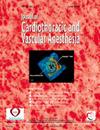备用体外膜氧合在产科患者中的应用:系统回顾。
IF 2.3
4区 医学
Q2 ANESTHESIOLOGY
Journal of cardiothoracic and vascular anesthesia
Pub Date : 2025-03-28
DOI:10.1053/j.jvca.2025.03.037
引用次数: 0
摘要
体外膜氧合(ECMO)是一种潜在的挽救生命的干预措施,常用于对常规治疗无反应的严重呼吸或心力衰竭危重患者。随着高危产科患者患病率的增加,在这一人群中已经确定了体外膜肺栓塞的指征,这一点在过去十年中报告的病例数量有所增加。尽管ECMO的适应症在怀孕患者和非怀孕患者中并无不同,但鉴于某些围产期疾病的高风险性质,人们对使用备用ECMO或产前ECMO的兴趣越来越大,以便在必要时快速部署静脉ECMO。本系统综述确定了14717例产科患者,其中1041例接受ECMO, 11例考虑或接受备用ECMO。描述了备用ECMO使用的适应症、风险和注意事项。由于围产期使用备用ECMO尚无共识指南,因此需要更多的研究来建立未来的实践指南,以确定合适的候选人和改善产妇结局。本文章由计算机程序翻译,如有差异,请以英文原文为准。
Standby Extracorporeal Membrane Oxygenation Use in Obstetric Patients: A Systematized Review
EXTRACORPOREAL MEMBRANE OXYGENATION (ECMO) is a potentially life-saving intervention often used in critically ill patients with severe respiratory or cardiac failure unresponsive to conventional treatments. As the prevalence of high-risk obstetric patients has increased, indications for ECMO have been identified in this population, as evidenced by an increased number of cases reported in the last decade. Although the indications for ECMO are not different for pregnant patients and nonpregnant patients, given the high-risk nature of certain peripartum conditions, there has been increased interest in the use of standby ECMO or precannulation ECMO, to enable rapid deployment of venoarterial ECMO should it be necessary. The present systematized review identified 14,717 obstetric patients, of whom 1041 received ECMO and 11 were considered for or received standby ECMO. The indications, risks, and considerations related to stand-by ECMO use are described. As no consensus guidelines exist for the peripartum use of stand-by ECMO, more research is needed to establish future practice guidelines for determining suitable candidates and improving maternal outcomes.
求助全文
通过发布文献求助,成功后即可免费获取论文全文。
去求助
来源期刊
CiteScore
4.80
自引率
17.90%
发文量
606
审稿时长
37 days
期刊介绍:
The Journal of Cardiothoracic and Vascular Anesthesia is primarily aimed at anesthesiologists who deal with patients undergoing cardiac, thoracic or vascular surgical procedures. JCVA features a multidisciplinary approach, with contributions from cardiac, vascular and thoracic surgeons, cardiologists, and other related specialists. Emphasis is placed on rapid publication of clinically relevant material.

 求助内容:
求助内容: 应助结果提醒方式:
应助结果提醒方式:


